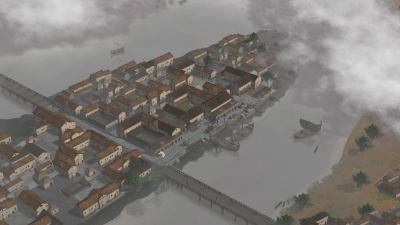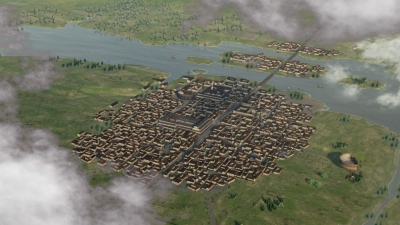
| |||||| NEWS |||| LUTETIA |||| THE PILLAR |||| THE BOATMEN |||| THE CHALLENGE |||| FILM |||| PARTNERS ||||| QUESTIONS |||||| CONTACT |||||| | français |
|---|
||| THE ORIGINS OF PARIS : LUTECE
.............ASMALL ROME ON SEINE RIVER
 |
2000 years ago, a rich Gallo-Roman city prospered on the banks of the Seine. Most of its monuments and traces of life are today covered by a sea of bitumen. But archeology, computer science and a pinch of imagination are opening our doors again. |
|---|
For a long time the existence of Lutetia, the ancient city at the origin of Paris, has used the myth.
Poets and historians of the Renaissance in search of ancient sources, have evoked legends about the birth of Paris. Others quoted Caesar describing the Gallic defeat of Parisii (-52) or Julian the Apostate praising the mild climate (360).
At the beginning of the 19th century, Europe was seized with a fever of exhumation from the past. In Paris, it is almost fortuitously, on the occasion of the general works of Haussmann that one digs in the sector of the historical center. There are Roman remains that confirm the existence of the mythical city.At the beginning of the 1st century of our era, a Gallo-Roman city develops on the Seine
Lutece is crossed by a wide main road, the cardo. This north-south axis still exists partly under the new name of rue Saint Jaques
In the city, the streets were organized in a well-ordered grid. It is estimated the densest area to a square of only 500m side.
It is in this space that will be built the main facilities of the city: the forum, the baths, the theater, the bullring, ...
The streets were served by a supply and drainage network. The domestication of water was a specialty of Roman engineers. In Rome and throughout the empire, the countryside and cities benefited from improved river systems. To feed Lutetia the sources of the south of the Paris basin are captured in Wissous, and directed to the city by a 16 km long aqueduct.

Where to see Lutetia today?
It is possible to visit some remains from gallo-roman period in Paris :
The arenas of Lutèce: the amphitheater where the shows were held is in the 5th arrondissement near the Metro Monge.
The thermal baths of Cluny: a vast thermal establishment can be visited in the National Museum of the Middle Ages in the 5th district near the Metro Cluny-Sorbonne.
An old quarter and port: the last vestiges of Lutetia before the barbarian invasions are in the 4th arrondissement on the Ile de la Cité in the archeological crypt of Notre Dame.
Archaeological discoveries: many archaeological pieces testifying to the life of Lutetians are in the Carnavalet Museum (under renovation).
A little further south in Arcueil: remains of the Lutece aqueduct.